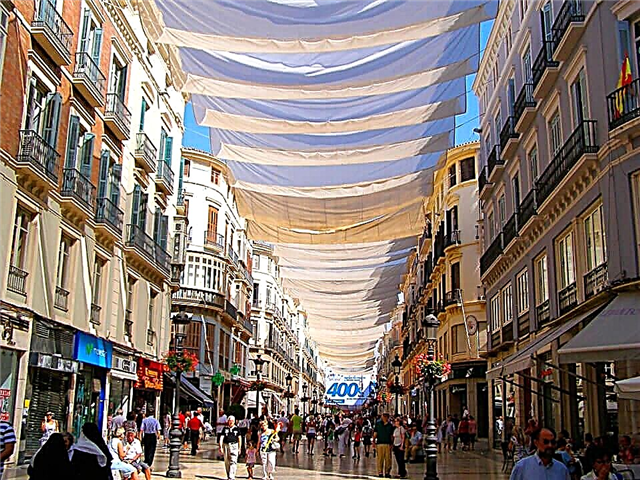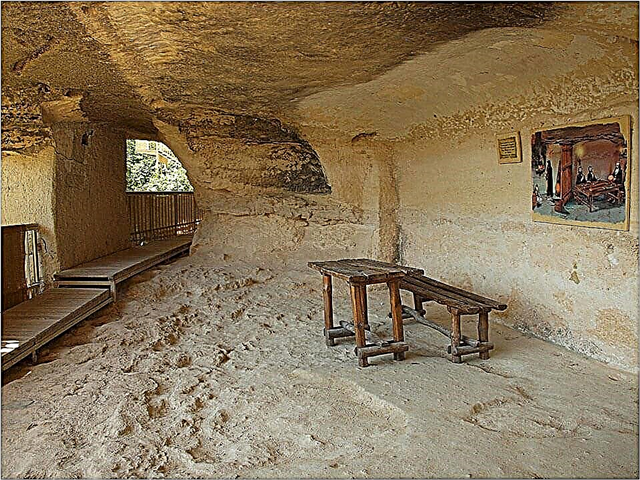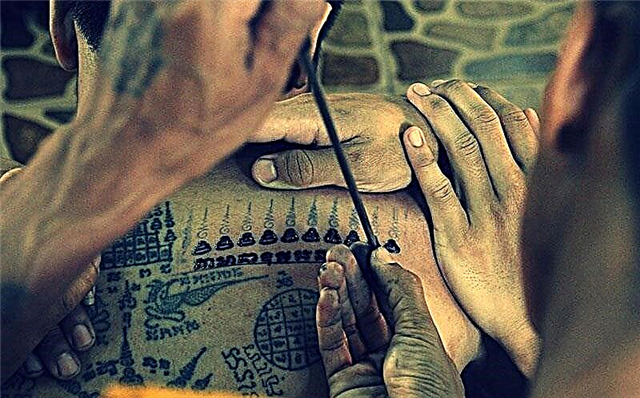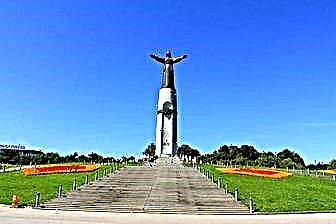In the entire Volga region, one cannot find such a friendly and hospitable people as the Chuvash. Everyone who has come to Cheboksary at least once has very warm feelings for this city. Especially if the trip fell on a warm golden autumn, when the forests dress in a fiery outfit and the color of the foliage seems even brighter against the background of the mighty Volga water surface.
Cheboksary is famous for the fact that Vasily Chapaev was born here. Many attractions are associated with the name of this hero of the Civil War. Another well-known fact is that more than 80% of all Russian hops grows in Chuvashia, so the city couldn't do without an original beer museum. There are also many museums, theaters and green squares in the capital of the republic.

The best hotels and hotels at affordable prices.
from 500 rubles / day
What to see and where to go in Cheboksary?
The most interesting and beautiful places for walking. Photos and a short description.
Mother Monument
The monument stands in the central square on a hill, dominating the entire surrounding buildings. It was installed in 2003 at the initiative of the head of Chuvashia N.V. Fedorov. The sculpture embodies the image of a mother blessing and protecting her children. Together with an impressive pedestal, it reaches a height of 46 meters. The monument is considered a symbol of Cheboksary and the entire Chuvash Republic.

Cheboksary Bay
An artificial bay in the historical center of the city, created at the confluence of the Cheboksarka River with the Volga. Due to its favorable location, over time, it turned into a cultural and recreational area, where locals enjoy their time. During the holidays, various events take place on the embankments; on weekends, people get out here for a walk, go boating and dine in restaurants.

Boulevard of Merchant Efremov
A promenade that serves as a local "Arbat". It is a cozy pedestrian zone lined with cafes, shops located in historic buildings of the 19th century, and souvenir stalls. There is also a museum and a drama theater on the boulevard. The street is decorated with monuments, flower beds and decorative elements of landscape design. In the center there is a sculptural composition made of Ural boulders.

River port
The city port has existed since 1917. In addition to freight traffic, he is engaged in passenger and travel services - boat trips along the banks of the Volga. Up to 15 ships can be moored in the harbor at the same time. Here you can rent a ship, arrange a holiday on board or take a full-fledged cruise to the nearest cities: Novocheboksarsk, Mariinsky Posad, Sviyazhsk.

Chuvash National Museum
The museum was founded in 1921. Today it is the largest cultural and educational center of Chuvashia and a repository of the spiritual and material culture of the peoples who have inhabited the territory of the republic since ancient times. The collections cover the period from the Stone Age to the present day. Among the exhibits there are monuments of the Balanovskaya and Abashevskaya archaeological cultures, examples of runic writing of the 17th – 18th centuries, products of national crafts.

Chuvash Art Museum
Collection of works of Russian and foreign art of past centuries, contemporary Chuvash artists of the XX-XXI centuries, folk art items of various ethnic groups. The museum has three permanent exhibitions. Quite often, temporary exhibitions are organized here, where they show exhibits from rich museum funds, which number more than 20 thousand items.

Beer Museum
It turns out that excellent beer is brewed in Cheboksary, which is not inferior in quality to well-known brands. In addition, most of the hops in Russia are grown in the Chuvash Republic. The city even has a full-fledged museum dedicated to the history of the foamy drink and its production technology. The exposition tells not only about local varieties and producers, it covers interesting aspects of the world brewing experience. Of course, the culmination of the excursion is the tasting.

Tractor History Museum
As you might guess from the name, the exposition of the museum consists of agricultural machinery. Here you can see rare examples of tractors from different countries, as well as a collection of 600 smaller scale models. In total, the funds contain more than 5 thousand exhibits. Visitors can visit several thematic exhibitions devoted to the history of agricultural technology, its various types, as well as advanced developments in mechanical engineering.

V.I.Chapaev Museum
V. Chapaev is a native of Cheboksary (or rather, the village of Budayka, which has long been included in the city limits). A whole complex is dedicated to the personality of the division commander during the Civil War, which includes a museum, a monument, a memorial house - a copy of the peasant hut of the Chapaev family, a public garden and a sculptural group of bas-reliefs depicting the fighter's comrades-in-arms. The entire museum ensemble was built in the 1970s and 1980s.

Russian drama theater
The theater troupe was formed in Cheboksary in 1918. In the early years, she gave performances in the former estate of the merchant Efremov. Later, a separate building was built for her. Today, the stage is housed in a 1950s building, erected in a classical style, adjusted for Soviet practicality. The facade has many national Chuvash ornaments.

Drama Theater named after K. Ivanov
The stage was founded in Kazan in 1918, after 2 years it moved to Cheboksary. The repertoire is based on Russian classical works performed in the Chuvash language, as well as plays by national authors. The theater is located in a classic building of the 1960s, listed as an architectural monument. Major reconstruction of the building was carried out in the 2000s.

Chuvash Opera and Ballet Theater
Cheboksary acquired its own opera stage in 1960. From the very beginning, the repertoire included not only well-known classical works, but also productions by Chuvash authors, which were even more popular. The modern program includes operas, operettas, ballets and musical performances for children. Since the 1990s, the theater has hosted two international festivals.

Holy Trinity Monastery
The monastery was founded in the 16th century by the order of Ivan the Terrible and abolished in 1924. During the Time of Troubles, the monastery was ruined, but after a few years it was revived and began to flourish. In the 18th century, the community was deprived of all possessions by the imperial decree, but later Paul I returned part of the lost to the monastery. In 1946, the architectural complex of the monastery was recognized as a monument and taken under state protection. It is currently active.

Vvedensky Cathedral
The stone church was erected in the middle of the 17th century in the tradition of Moscow architecture on the site of the wooden church, which was laid under Ivan the Terrible. Despite all the restorations and repairs, the building has almost completely preserved its historical appearance. Inside there are valuable frescoes and an iconostasis. During the Soviet era, the cathedral was closed for a short period. In general, he managed to avoid ruin and destruction.

Church of the Assumption of the Blessed Virgin Mary
The structure is located on the shores of the Cheboksary Bay, its white walls and a blue dome adorn the surrounding landscape. The temple was erected in the 18th century in the style of the Russian provincial baroque with the money of a Moscow merchant. All buildings of the complex, except for the main building and the bell tower, were demolished in the 1930s. After the construction of the Cheboksary hydroelectric power station, the belfry was flooded. In the post-Soviet period, the temple was restored and restored.

Memorial Park "Victory"
The park is located on a hill that rises above the entire city, it is clearly visible from the shores of the Cheboksary Bay. The first Monument of Military Glory was erected here in 1980 (figures of a mother with a banner in her hands and a soldier kneeling before her). At the foot of the hill, the Eternal Fire was placed on a granite pedestal. Later, other monuments began to appear dedicated to those who died in the Chechen wars and Afghanistan and suffered during the liquidation of the consequences of the accident at the Chernobyl nuclear power plant. In the 2000s, the fountain and the Alley of Heroes were built.
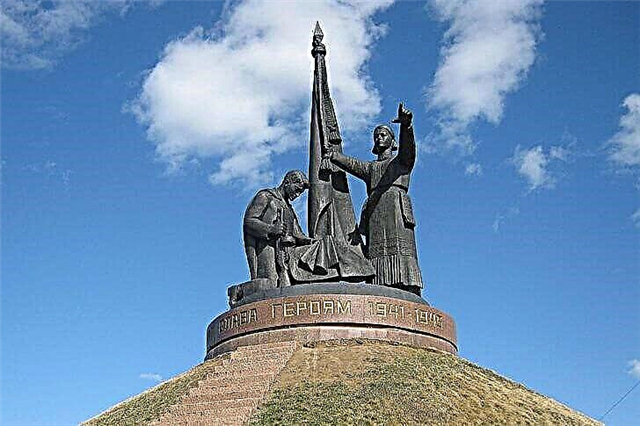
V. Chapaev Square
A 6-hectare public garden is located on the territory of the former village of Budaevka, the birthplace of Chapaev. Until 1960, collective farm fields were located here. As part of the green space, about 500 trees were planted, paths were paved, benches were installed, flower lawns and fountains were built. The park houses the Museum. Chapaev and a monument in his honor. The monument depicts the division commander on horseback with a raised saber - exactly the way he is used to seeing in films about the Civil War.

Lakreevsky forest
This is the name of the central park of Cheboksary. Previously, there was a natural oak forest, which in the 1950s they decided to cultivate and turn into a recreation area. The park occupies a decent area of 41 hectares, some of the trees in it are between 90 and 140 years old. In the 1970s, the forest was given the status of a natural monument. There are attractions, playgrounds and concert venues for visitors.

Park them. 500th anniversary of Cheboksary
Another city park that competes with the Lakreevsky forest. It was founded in 1969 for the 500th anniversary of the city, as you might guess from the name, but the official opening took place only 10 years later. After the decline and devastation of the 1990s, the place experienced a rebirth - new attractions and grounds for folk festivities appeared, well-groomed alleys were decorated with original sculptures.

Volga river
Cheboksary stands on the banks of the great Volga, which carries its waters across the vast plain. The wide channel of the waterway within the city allows cruise ships and cargo ships to run. In the warm season, small boats, beautiful yachts and sailboats float along the Volga, and residents and guests tend to take a boat trip or go on a river excursion to the nearest cities.




